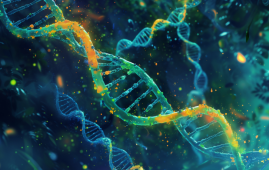

Declining Circumcision Rates Raise Concerns
A new study by Johns Hopkins Medicine and the Johns Hopkins Bloomberg School of Public Health reveals that neonatal male circumcision (NMC) rates in the U.S. have dropped nearly 5% over the past decade.
Despite strong recommendations from leading health organizations, including the World Health Organization (WHO), American Academy of Pediatrics (AAP), and the CDC, the procedure’s prevalence fell from 54.1% in 2012 to 49.3% in 2022, according to findings published in JAMA Pediatrics.
“We reviewed over 1.5 million U.S. hospitalizations of male neonates, ages 0 to 28 days, during the period 2012 to 2022, and found that the overall prevalence of hospitalizations where a neonatal male circumcision was performed decreased significantly, from 54.1% to 49.3%. Decreases were observed across most patient and hospital subgroups, including whites – a group with traditionally high circumcision rates – where circumcisions dropped 5.3% over the decade studied.”
- Aaron Tobian, M.D., Ph.D., study co-senior author, professor of pathology, Johns Hopkins University School of Medicine
Explore All Pediatrics CME/CE Conferences and Online Courses
Researchers analyzed data from over 1.5 million hospitalizations of newborn males between 0-28 days old using the Kids’ Inpatient Database. Significant declines were observed among white neonates, dropping from 65.3% to 60.0%. Rates among Black (64.9% to 66.1%) and Hispanic infants (21.2% to 21.0%) remained steady, while decreases were also seen in Asian/Pacific Islanders and Native Americans.
Barriers Driving the Downward Trend
Study co-author Dr. Aaron Tobian, professor of pathology at Johns Hopkins, cited multiple factors for the decline:
- Parental distrust of medical advice is driven by growing skepticism toward healthcare recommendations.
- Cultural demographics, with Hispanics representing the fastest-growing population group in the U.S., have historically shown lower circumcision rates.
- Financial barriers, as 17 states stopped Medicaid coverage for routine circumcision by 2011, reducing access for lower-income families.
Interestingly, newborns from higher-income families and those with private insurance initially had the highest circumcision rates but also experienced the largest declines over the study period.
Public Health Implications
Circumcision has been associated with a lower risk of urinary tract infections, penile inflammation, and reduced transmission of sexually transmitted infections, including HIV, genital herpes, and HPV, which are linked to several cancers.
Health experts caution that declining rates may affect long-term public health outcomes, especially in populations at higher risk for these conditions.
The study underscores the importance of addressing cultural perceptions, improving patient education, and ensuring equitable access to this preventive procedure. With changing population dynamics and healthcare policies, clinicians must engage families with accurate, evidence-based information to guide decision-making.
Source:
more recommended stories
 Phage Therapy Study Reveals RNA-Based Infection Control
Phage Therapy Study Reveals RNA-Based Infection ControlKey Takeaways (Quick Summary) Researchers uncovered.
 Pelvic Floor Disorders: Treatable Yet Often Ignored
Pelvic Floor Disorders: Treatable Yet Often IgnoredKey Takeaways (Quick Summary) Pelvic floor.
 Urine-Based microRNA Aging Clock Predicts Biological Age
Urine-Based microRNA Aging Clock Predicts Biological AgeKey Takeaways (Quick Summary) Researchers developed.
 Circadian Control of Neutrophils in Myocardial Infarction
Circadian Control of Neutrophils in Myocardial InfarctionKey Takeaways for HCPs Neutrophil activity.
 E-Cigarette Use and Heart Attack Risk in Former Smokers
E-Cigarette Use and Heart Attack Risk in Former SmokersKey Takeaways for Clinicians and Nurses.
 Ultramarathon Physiology: What HCPs Should Know?
Ultramarathon Physiology: What HCPs Should Know?Ultramarathon Metabolism: What Happens to the.
 High-Intensity Training and Oxidative Stress Insights
High-Intensity Training and Oxidative Stress InsightsNew Evidence Linking High-Intensity Training and.
 Sterilized Fermented Beverage for Obesity: New Evidence
Sterilized Fermented Beverage for Obesity: New EvidenceEarly Insights Into a Sterilized Fermented.
 36-Week Pre-eclampsia Screening May Reduce Term Risk
36-Week Pre-eclampsia Screening May Reduce Term RiskA New Preventive Strategy for Term.
 Cardiovascular Risk and Sudden Cardiac Death in Diabetes
Cardiovascular Risk and Sudden Cardiac Death in DiabetesRising Sudden Cardiac Death (SCD) Risk.

Leave a Comment